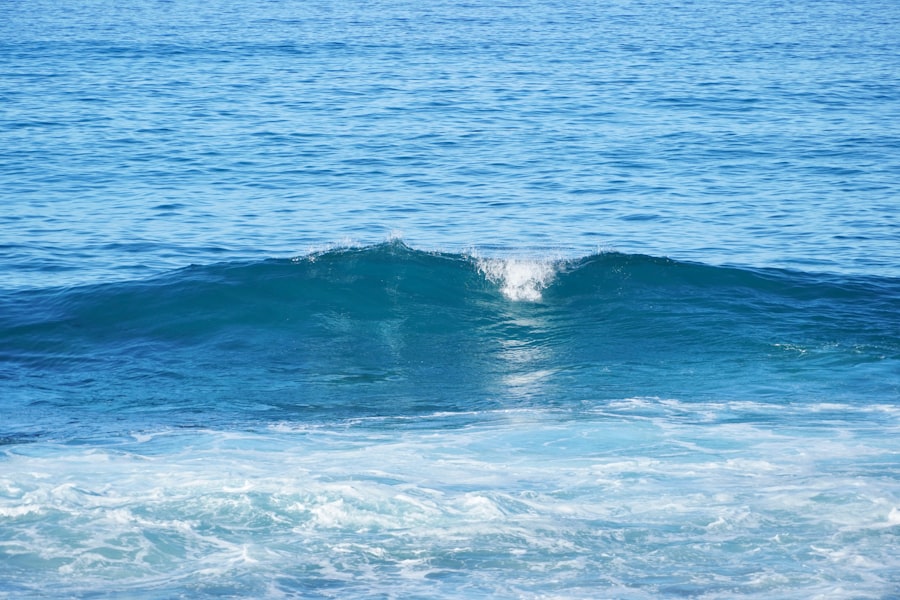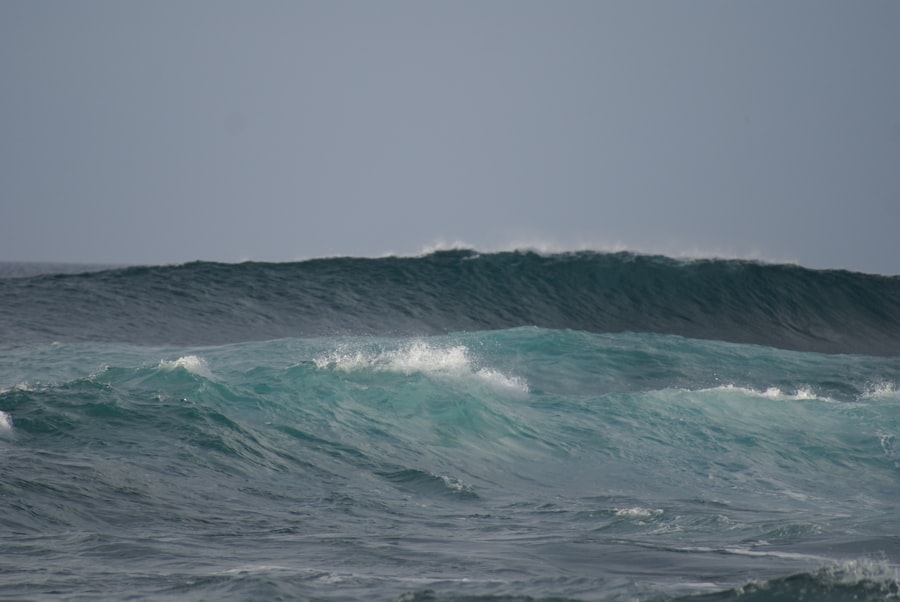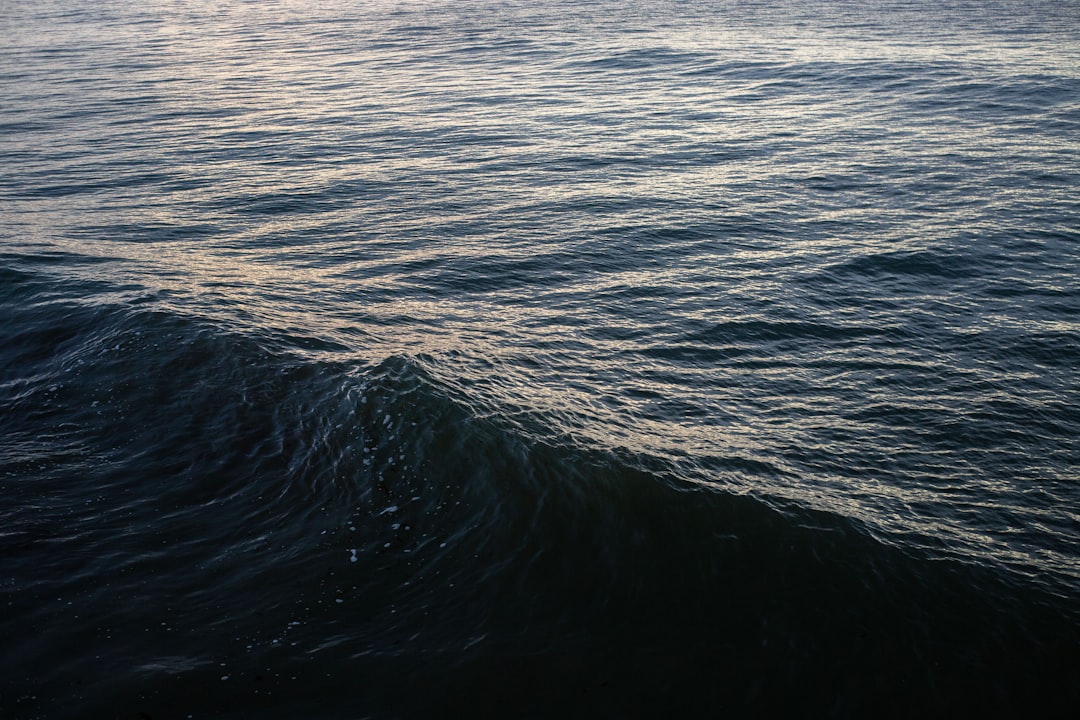The Drake Passage, a body of water situated between the southern tip of South America and Antarctica, is renowned for its tumultuous seas and unpredictable weather. Spanning approximately 600 kilometers (370 miles) in width, it serves as a critical maritime route for vessels traveling to and from the Antarctic region. The passage is named after Sir Francis Drake, the English explorer who navigated these waters in the late 16th century.
Its strategic importance cannot be overstated, as it connects the Atlantic and Pacific Oceans, facilitating not only commercial shipping but also scientific research expeditions to the icy continent.
The confluence of the Antarctic Circumpolar Current, which flows unimpeded around Antarctica, and the various oceanic currents from the Atlantic and Pacific Oceans creates a unique and often treacherous environment.
Understanding the complexities of this passage is essential for anyone considering a journey through its waters.
Key Takeaways
- The Drake Passage is a narrow stretch of water between South America’s Cape Horn and the South Shetland Islands of Antarctica, known for its rough seas and strong winds.
- Weather conditions in the Drake Passage can be unpredictable and extreme, with frequent storms and high waves, making it one of the most challenging maritime routes in the world.
- Proper preparation for the journey through the Drake Passage includes packing warm clothing, seasickness medication, and securing personal belongings to prevent them from sliding or falling during rough seas.
- Safety measures on the ship include attending safety briefings, wearing a life jacket when instructed, and following the instructions of the ship’s crew in case of an emergency.
- The Drake Passage is home to a diverse range of wildlife, including whales, seals, and various seabird species, making it a popular destination for wildlife enthusiasts and photographers.
Weather Conditions in the Drake Passage
The weather conditions in the Drake Passage are notoriously volatile, with rapid changes that can occur within a matter of hours. The region is influenced by a variety of climatic factors, including the cold air masses from Antarctica and the warmer winds from the north. This clash of temperatures often leads to stormy weather, with high winds and rough seas being common occurrences.
Mariners navigating these waters must be prepared for sudden squalls and unpredictable swells that can reach heights of up to 10 meters (33 feet), making it imperative for vessels to be equipped for such challenges. In addition to wind and waves, fog and precipitation can further complicate navigation in the Drake Passage. Visibility can drop dramatically, creating hazardous conditions for ships attempting to traverse this route.
The combination of these elements means that travelers should not only be prepared for rough seas but also for the possibility of extended periods of inclement weather. Understanding these conditions is crucial for ensuring a safe and successful journey through this formidable passage.
Preparing for the Journey

Preparation is key when embarking on a journey through the Drake Passage. Travelers should begin by researching their chosen vessel and its capabilities, as not all ships are equipped to handle the challenging conditions that can arise in these waters. It is advisable to select a reputable cruise line or expedition company that has extensive experience navigating the Drake Passage.
These companies often provide valuable information about what to expect during the journey, including safety protocols and onboard amenities. In addition to selecting the right vessel, travelers should also consider their personal gear and supplies. Packing appropriate clothing is essential, as temperatures can vary significantly throughout the journey.
Layering is recommended, with moisture-wicking base layers, insulating mid-layers, and waterproof outer layers being ideal choices. Furthermore, travelers should not forget essentials such as sunscreen, sunglasses, and hats to protect against the sun’s reflection off the water and ice. By taking these preparatory steps, travelers can enhance their comfort and enjoyment during their adventure through the Drake Passage.
Safety Measures on the Ship
| Category | Metric | Value |
|---|---|---|
| Fire Safety | Number of fire drills conducted | 12 |
| Lifeboat Drills | Percentage of crew participating | 100% |
| Emergency Response | Time taken to assemble at muster stations | 5 minutes |
| Security Measures | Number of security personnel on board | 20 |
Safety measures aboard vessels traversing the Drake Passage are paramount due to the unpredictable nature of the waters. Reputable cruise lines and expedition companies prioritize passenger safety by implementing rigorous protocols and training for their crew members. Before departure, passengers are typically briefed on safety procedures, including emergency evacuation plans and the proper use of life jackets.
This information is crucial for ensuring that everyone on board knows how to respond in case of an emergency. Moreover, modern ships are equipped with advanced navigation systems and weather monitoring technology that help mitigate risks associated with traversing the Drake Passage. These systems allow crew members to make informed decisions regarding route adjustments based on real-time weather data.
Additionally, many vessels have stabilizers designed to reduce rolling motion, enhancing passenger comfort during rough seas. By prioritizing safety through comprehensive training and state-of-the-art technology, cruise lines ensure that travelers can focus on enjoying their journey rather than worrying about potential hazards.
Wildlife in the Drake Passage
The Drake Passage is not only a challenging maritime route but also a vibrant ecosystem teeming with wildlife. The nutrient-rich waters support a diverse array of marine life, making it a prime location for wildlife enthusiasts and researchers alike. Among the most iconic inhabitants of this region are various species of whales, including humpback whales, orcas, and minke whales.
These majestic creatures can often be spotted breaching or feeding in the waters of the passage, providing unforgettable experiences for those fortunate enough to witness them. In addition to whales, seabirds such as albatrosses and petrels are commonly seen soaring above the waves. These birds are well adapted to life at sea, with their impressive wingspans allowing them to glide effortlessly over long distances.
The presence of such diverse wildlife highlights the ecological significance of the Drake Passage and underscores the importance of conservation efforts in this fragile environment. Travelers venturing through these waters are often encouraged to participate in wildlife observation activities, fostering a deeper appreciation for the natural world.
Activities to Pass the Time

While traversing the Drake Passage can be an exhilarating experience, it can also involve extended periods at sea where passengers may seek activities to pass the time. Many cruise lines offer a variety of onboard programs designed to engage travelers during their journey. Educational lectures led by naturalists or scientists provide insights into the unique geography and ecology of the region, enriching passengers’ understanding of their surroundings.
In addition to educational opportunities, many vessels feature recreational amenities such as lounges, observation decks, and even fitness centers. Passengers can enjoy socializing with fellow travelers or simply relaxing while taking in breathtaking views of the ocean. For those seeking more active pursuits, some ships offer yoga classes or guided meditation sessions designed to promote relaxation amidst the sometimes turbulent waters.
By providing a range of activities, cruise lines ensure that passengers remain entertained and engaged throughout their journey across the Drake Passage.
Tips for Dealing with Sea Sickness
Sea sickness is a common concern for many travelers embarking on a journey through the Drake Passage. The combination of rough seas and prolonged exposure to motion can lead to discomfort for even seasoned sailors. To mitigate these effects, travelers are encouraged to take proactive measures before setting sail.
Over-the-counter medications such as antihistamines or motion sickness patches can be effective in preventing symptoms if taken prior to departure. In addition to medication, there are several natural remedies that may help alleviate sea sickness symptoms. Staying hydrated is crucial; drinking plenty of water can help maintain equilibrium within the body.
Eating light meals before and during travel can also be beneficial; heavy or greasy foods may exacerbate feelings of nausea. Furthermore, finding a stable position on the ship—preferably in a central location where motion is minimized—can significantly reduce discomfort. By employing these strategies, travelers can enhance their chances of enjoying a smooth journey across the Drake Passage.
Navigational Challenges
Navigating through the Drake Passage presents unique challenges that require skillful seamanship and advanced technology. The unpredictable weather patterns combined with strong currents create an environment where conditions can change rapidly. Mariners must remain vigilant at all times, constantly monitoring both weather forecasts and sea conditions to ensure safe passage.
Additionally, icebergs pose another significant navigational challenge in these waters. As vessels approach Antarctica, they must be prepared for potential encounters with floating ice masses that can drift into shipping lanes. Modern ships are equipped with ice detection systems that help identify hazards well in advance, allowing crews to adjust their routes accordingly.
The combination of experienced crew members and cutting-edge technology plays a vital role in successfully navigating this complex maritime landscape.
Historical Significance of the Drake Passage
The historical significance of the Drake Passage extends far beyond its challenging waters; it has played a pivotal role in maritime exploration and trade since its discovery. Sir Francis Drake’s expedition in 1578 marked one of the first European attempts to navigate these treacherous waters, paving the way for future explorers seeking new trade routes to Asia and beyond. Over time, this passage became an essential route for whalers, sealers, and later scientific expeditions aimed at studying Antarctica’s unique environment.
The passage has also been instrumental in shaping global maritime policies regarding navigation rights and environmental conservation efforts. As awareness of climate change grows, discussions surrounding responsible travel through this region have become increasingly important. The historical context surrounding the Drake Passage serves as a reminder of humanity’s ongoing relationship with nature and underscores the need for sustainable practices in preserving this vital waterway.
Environmental Conservation in the Drake Passage
Environmental conservation efforts in the Drake Passage have gained momentum as awareness of climate change impacts increases globally. The region’s delicate ecosystem is home to numerous species that rely on its unique marine environment for survival. Organizations dedicated to conservation work tirelessly to protect these habitats from threats such as overfishing, pollution, and climate change-induced shifts in ocean temperatures.
One notable initiative involves establishing marine protected areas (MPAs) within parts of the Drake Passage to safeguard critical habitats from human activities that could disrupt local ecosystems. These MPAs aim not only to preserve biodiversity but also to promote sustainable tourism practices among travelers venturing into this pristine environment. By fostering responsible travel behaviors and supporting conservation initiatives, visitors can contribute positively to preserving the natural beauty of this remarkable region.
The Future of Travel through the Drake Passage
As interest in Antarctic exploration continues to grow among travelers worldwide, the future of travel through the Drake Passage appears promising yet complex. Advances in ship design and technology are making it possible for vessels to navigate these challenging waters more safely than ever before. Eco-friendly practices are also becoming increasingly prevalent within cruise lines as they seek ways to minimize their environmental impact while providing unforgettable experiences for passengers.
However, with increased tourism comes heightened responsibility regarding environmental stewardship and sustainable practices within this fragile ecosystem. Stakeholders must work collaboratively—governments, conservation organizations, cruise lines—to ensure that future travel through the Drake Passage prioritizes ecological preservation alongside adventure-seeking exploration. By embracing sustainable tourism principles today, travelers can help safeguard this extraordinary maritime route for generations to come.
In conclusion, traversing the Drake Passage offers an unparalleled adventure filled with challenges and rewards alike. From understanding its complex weather patterns to appreciating its rich wildlife and historical significance, travelers embark on journeys that leave lasting impressions long after they return home. As they navigate these storied waters—whether marveling at majestic whales or engaging in educational programs—passengers become part of an ongoing narrative that celebrates both exploration and conservation within one of Earth’s most remarkable regions.
The Drake Passage is notorious for its turbulent waters and massive waves, making it a challenging route for sailors and researchers alike. An interesting article that delves into the dynamics of wave sizes in this region can be found on MyGeoQuest. This article provides insights into the factors contributing to the formidable wave conditions in the Drake Passage, including wind patterns and ocean currents. For more detailed information, you can read the full article by visiting MyGeoQuest’s page on the Drake Passage.
WATCH NOW! Drake Passage: Earth’s Deadliest Waters Revealed
FAQs
What is the Drake Passage?
The Drake Passage is the body of water between the southern tip of South America and the northern tip of the Antarctic Peninsula. It is known for its rough seas and challenging sailing conditions.
What is the wave size in the Drake Passage?
The wave size in the Drake Passage can vary greatly, but it is known for having some of the roughest seas in the world. Waves can reach heights of 30 feet or more during storms.
Why are the waves in the Drake Passage so large?
The large waves in the Drake Passage are primarily due to the strong westerly winds and the lack of any significant landmass to break up the waves. These factors contribute to the development of large, powerful waves in the area.
Are there specific times of year when the waves are larger in the Drake Passage?
The waves in the Drake Passage can be large at any time of year, but they are generally more intense during the austral winter (June-August) when storms are more frequent and the winds are stronger.
What are the implications of large waves in the Drake Passage?
The large waves in the Drake Passage can make sailing and navigation challenging, and can also impact marine life in the area. Ships crossing the Drake Passage often experience rough conditions, and it is considered one of the most challenging sea crossings in the world.
